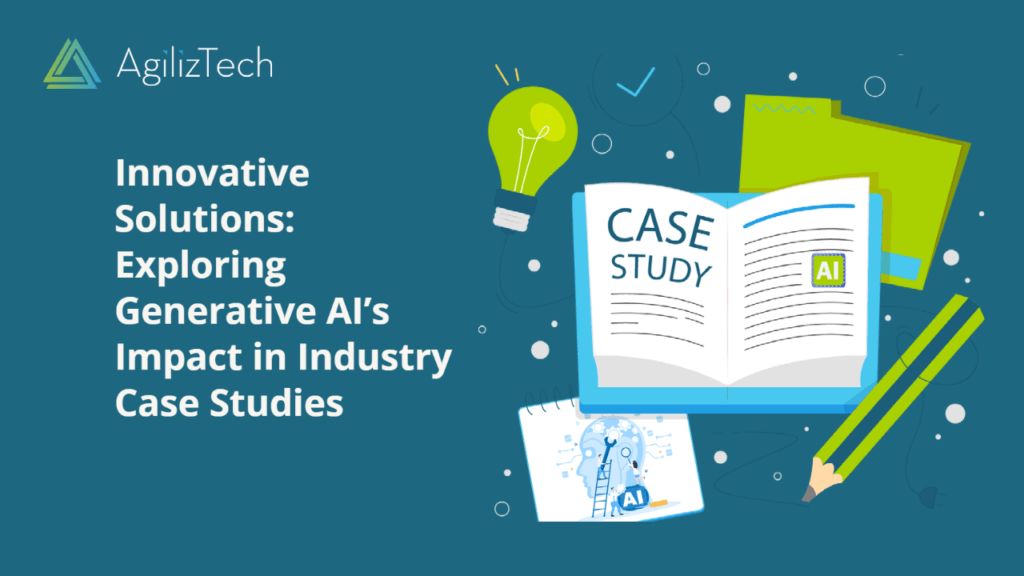
Creativity with Generative AI: Transforming Industries
Unlocking Creativity with Generative AI: Case Studies from Industry
Introduction
In today’s rapidly evolving technological landscape, Businesses seek creative ways to unlock potential. One such avenue is the utilization of Generative Artificial Intelligence (AI), a cutting-edge technology with immense potential for fostering creativity. In this blog post, we will explore captivating case studies that demonstrate how businesses are harnessing the power of Generative AI to bolster their creative endeavors. From content creation to design and beyond, Generative AI is revolutionizing the way industries approach creativity.
Content Creation
Generative AI transforms content creation, enabling businesses to personalize and automate their offerings to cater to individual preferences. For example, Netflix uses Generative AI algorithms to create personalized movie and TV show recommendations for its users. The AI system analyzes user preferences and viewing habits to generate tailored suggestions, enhancing the user experience and promoting creative content exploration.
Meanwhile, The Washington Post employs Generative AI to automate the creation of news articles on a large scale. The AI system uses data-driven algorithms to generate reports on topics such as sports scores, financial updates, and real estate listings. This automation allows journalists to focus on more in-depth and investigative reporting, pushing the boundaries of journalism and fostering creativity in news production.
Design and Visual Arts
Generative AI is revolutionizing the world of design and visual arts by streamlining workflows and pushing creative boundaries. Adobe incorporates Generative AI in its design tool, Adobe Sensei. The AI-powered tool helps designers generate multiple variations of a design concept, providing inspiration and speeding up the creative process. Designers can explore new possibilities and unleash their creative potential with the help of AI.
The Google DeepDream Project is another remarkable example of Generative AI in the creative realm. The project utilizes Generative AI to transform ordinary images into visually stunning and surreal artworks. AI trained on vast datasets, generates patterns, effects, enabling artists and photographers to explore new dimensions of creativity in image editing.
Music and Sound
Generative AI also makes waves in the music and sound industry, offering new avenues for creativity and artistic expression. Jukin Media employs Generative AI to automatically generate soundtracks for user-generated videos. The AI system creates customized background music by analyzing the video content and its emotional context, enhancing the overall viewer experience and fostering a deeper connection with the content.
OpenAI’s MuseNet is an AI system that uses Generative AI to compose original music across various genres and styles. The system assists musicians and composers in exploring new musical ideas and expanding their creative possibilities. MuseNet helps artists unlock creativity, create unique compositions.
Conclusion
Generative AI is a game-changer for unlocking creativity in various industries. From content creation to design and music, businesses harness AI algorithms’ power to foster innovative ideas and streamline creative processes. By embracing Generative AI, organizations can enhance their creative output, captivate audiences, and stay ahead in an increasingly competitive landscape. The case studies we’ve explored demonstrate the immense potential of Generative AI in unlocking creativity, paving the way for exciting possibilities in the future.
Remember, when using information from external sources, always provide proper citations to avoid plagiarism and give credit to the original authors.
Generative AI is transforming industries, and by embracing its potential, businesses can unlock new realms of creativity and drive innovation forward. Embrace the power of Generative AI and unleash your creative potential today!
(Source: Netflix, The Washington Post, Adobe, Google DeepDream Project, Jukin Media, OpenAI’s MuseNet)


